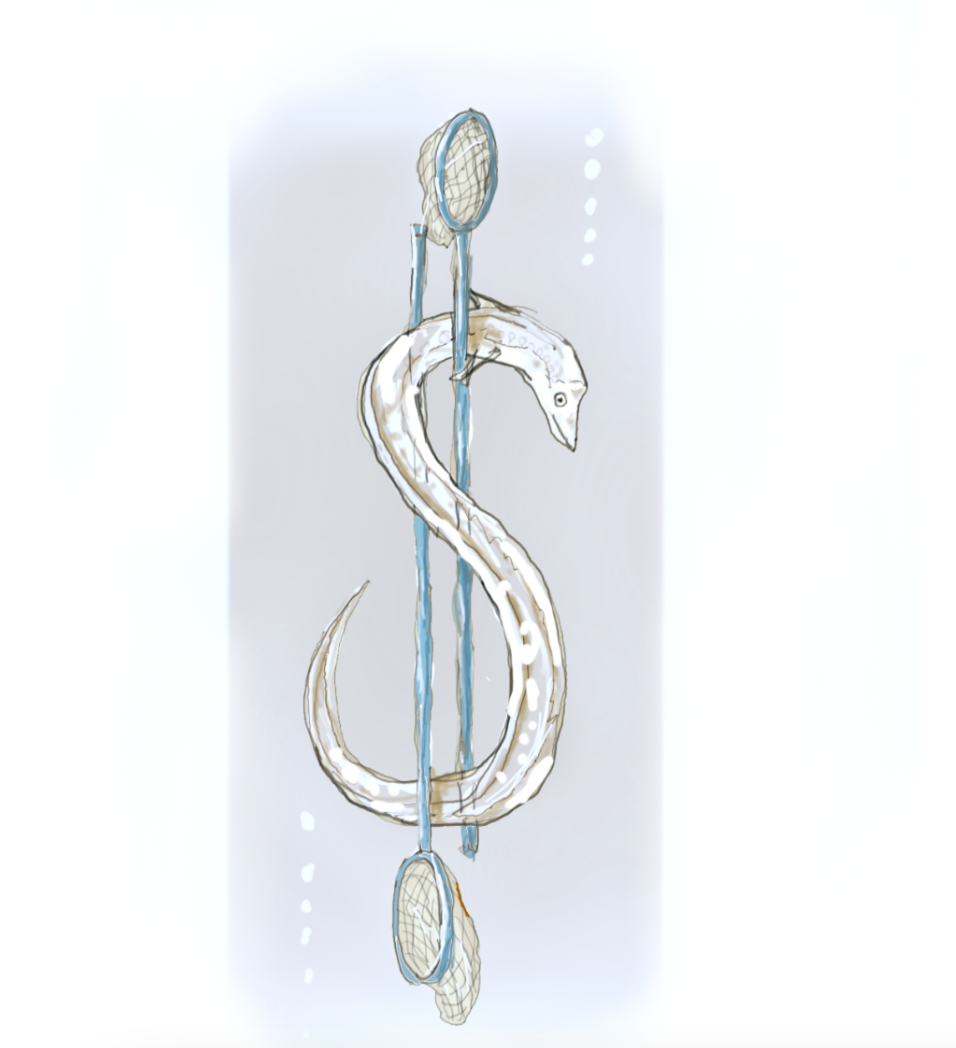The American eel’s lifestyle is as elusive as it gets. No one has seen one mate in the Sargasso Sea, the eel’s birthplace. However, we know that after hatching, eels begin their journey to land by following the Antilles Current and Gulf Stream toward the mouths of North American rivers. Elvers (juvenile specimens also known as glass eels) then venture inland, mature, and later return to the ocean to mate, with the entire process ranging from a few months to a few years in duration.
The unfortunate truth is that eel populations worldwide are rapidly declining. They have faced overfishing since the 1970s, resulting in poaching regulations in most of the world. Today, just two US states award eel fishing licenses: South Carolina and Maine. Because South Carolina only allows traps for fully grown eels, Maine has become the heart of the elver issue.
The elver market is an unsustainable initiative that illustrates the faults of state-level environmental protections. Communities that rely on natural resources as their primary sources of income become threatened when a highly seasonal job, like eel fishing, meets a decentralized, unregulated, and often illegal international market. Controlling the fish only solves part of the problem—eel fishing can only be sustainable when small fisheries operate under equitable working conditions.
In the spring, Maine fishermen put on their headlamps and stand knee-deep in streams with nets in their hands. Eels, measured by the pound, cost $50,000 per gallon bucket and those who sell the eels overseas receive even more. Bill Sheldon, who The Atlantic referred to as an “eel kingpin,” operated a massive illegal fishing scheme out of Maine. Sheldon bought elvers from Maine fishermen and shipped them off to mature in Japan and Taiwan, where demand for elvers are high because of the countries’ strict juvenile harvesting bans and their importance in local cuisine. Similar operations have run in Virginia and Nova Scotia, though at a smaller scale.
A 2017 University of Maine aquaculture survey found that fishing in the state is a $137.6 million industry run primarily by small-scale fisheries. Eeling is not the primary venture for most fisheries; later in the year, they move to shellfish, cod, and anything else that seems profitable. The seasonal window is narrow—the Maine Inland Department of Fisheries and Wildlife bans fishing from October to March and puts further limitations on spring and fall fishing. This prohibition ensures that the fish—already vulnerable in the winter months—have time to recover. Environmentalist Douglass Watts puts it plainly in The Atlantic documentary: “If you catch all the babies, you’re not gonna have adults.”
The small-scale fisheries, however, are no less vulnerable than their prey. In 2021, for instance, a federal bill banned winter lobstering over almost 1,000 square miles of the Gulf of Maine to preserve the endangered right whale population. As a result, fishermen have been forced to relocate to less populated fishing grounds. State representative and lobsterman Billy Bob Faulkingham says, “For an off-shore fisherman, [October to January] are the four peak fishing months, and many of us off-shore fishermen will catch up to three-quarters of our annual earnings in those four months.” With both the sea and the rivers off-limits in the colder months, it’s no wonder that eelers turn to poaching come spring.
Climate change is also a complicating factor. Lobsters, in particular, are very sensitive to water that is too hot or too cold and cannot simply migrate north if the temperature is unsatisfactory. When Maine lobsterwoman Krista Tripp began noticing the negative impact of warming waters on the lobster population, she decided to expand her fishing acumen. “I started the oyster farm, because what happens if something happens with the lobster? I wanted something to pass down to my son.” Sustainable fishing is not only about having enough resources in the present but also about maintaining the trade for generations to come.
The federal government has noticed the problems faced by the fishing industry, but has not found long-term solutions. This spring, it allotted $7 million to Maine’s herring fishermen to compensate them for lost jobs as a result of dramatically lowering the herring quota. Money, of course, can go a long way, but as the old adage goes, “Give a man, a fish and he will be hungry again tomorrow. Teach a man how to fish, and he will be fed for life.”What we need is a major reorganization of the fishing industry. Many sustainable practices require extra hands and sea-related skills: Kelp farming is on the rise, as is oyster farming and other filter-feeder cultivation. If job preservation is at the forefront of species conservation efforts, fishermen will be much more likely to comply with laws that would otherwise restrict them. The invisible hand is a poor environmentalist—it needs a nudge from time to time. If the government can make the market forget about our eel friends, it will grant them the chance to once again return to the Sargasso Sea and complete their secret cycle.
